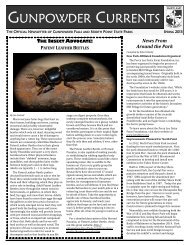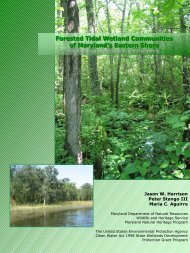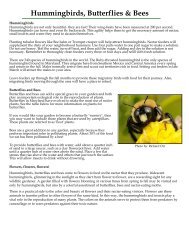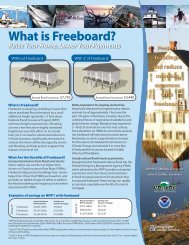Freshwater mussel records collected by the Maryland Department of ...
Freshwater mussel records collected by the Maryland Department of ...
Freshwater mussel records collected by the Maryland Department of ...
Create successful ePaper yourself
Turn your PDF publications into a flip-book with our unique Google optimized e-Paper software.
Pyganodon cataracta had previously been encountered 26 times at 24 sites<br />
(Figure 18). In 2009, we <strong>collected</strong> P. cataracta at 7 sites (Table 1), three <strong>of</strong> which<br />
represent new watershed <strong>records</strong>. Two confirmed host fish (L. gibbosus and L.<br />
macrochirus) were frequently <strong>collected</strong> at sites where P. cataracta was also encountered<br />
(Table 5). The four remaining confirmed host fishes were uncommon and two species<br />
are non-natives. A majority <strong>of</strong> confirmed host fishes for congeneric <strong>mussel</strong>s were also<br />
infrequent or absent. Chemical and physical variables <strong>collected</strong> from streams where P.<br />
cataracta were present (N = 17) and absent (N = 104) were similar for most variables<br />
(Figure 19). A majority <strong>of</strong> occupied sites had nitrate and total nitrogen concentrations <strong>of</strong><br />
2-3 mg/L, while none were <strong>collected</strong> where concentrations >5 mg/L. The scores <strong>of</strong><br />
physical habitat variables and biological indices at sites with P. cataracta were similar to<br />
sites where <strong>the</strong>y were absent; however, <strong>the</strong>y were not found at sites with pool glide<br />
quality >7. Mean percent forest and agricultural land cover <strong>of</strong> catchments with P.<br />
cataracta was higher than catchments where <strong>the</strong>y were absent while urban land cover<br />
was lower at sites where <strong>the</strong>y were present. We typically encountered P. cataracta in<br />
wider streams (>2 m) in larger catchments (1000-5000 ac) with very low gradient<br />
(
















